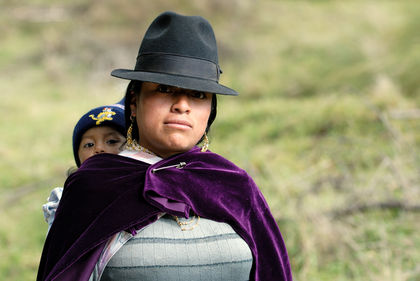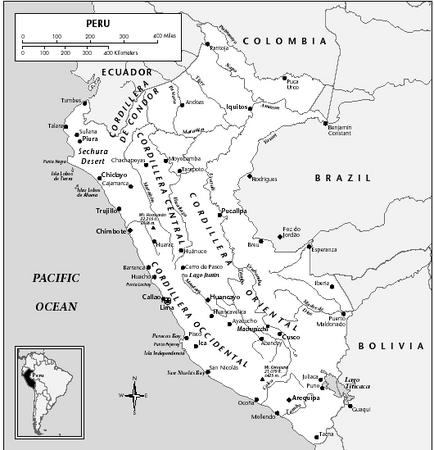Peru - Ethnic groups

According to the latest estimates, about 45% of the inhabitants are Amerindian, 37% mestizo (of mixed Spanish and Amerindian ancestry), 15% white, and 3% black, Asian, or other.
Of the 4–7 million sierra Amerindians under Inca domination, fewer than one million were left when the first colonial census was taken in 1777. A failing food supply and new diseases, such as smallpox, scarlet fever, and measles, were lethal to the young. Despite continuing disease and poverty found among the Amerindians today, they have increased to more than eight

million. The main groups are the Quechua- and Aymará-speaking tribes, but there are also some other small tribes in the highlands. Peru's lowland forest Amerindians were never subjugated by Incas or by Spaniards and continue to be fishermen, hunters, and foragers. In the mid-1980s, at least 225,000 rainforest Indians were grouped in 37 tribes. A 20-year plan announced in 1968 called for the full social, economic, and political integration of Peru's Amerindian population. Nevertheless, in the 1980s, sociocultural distinctions based on ethnic background were endemic to Peruvian society, with whites (especially the criollos, those of early Spanish descent) at the top of the hierarchy, mestizos and cholos (acculturated Amerindians) below them, and monolingual Quechua- or Aymará-speaking Amerindians at the bottom.
Small groups of Germans, Italians, and Swiss are important in commerce, finance, and industry. Chinese and Japanese operate small businesses, and some Japanese have been successful in agriculture.